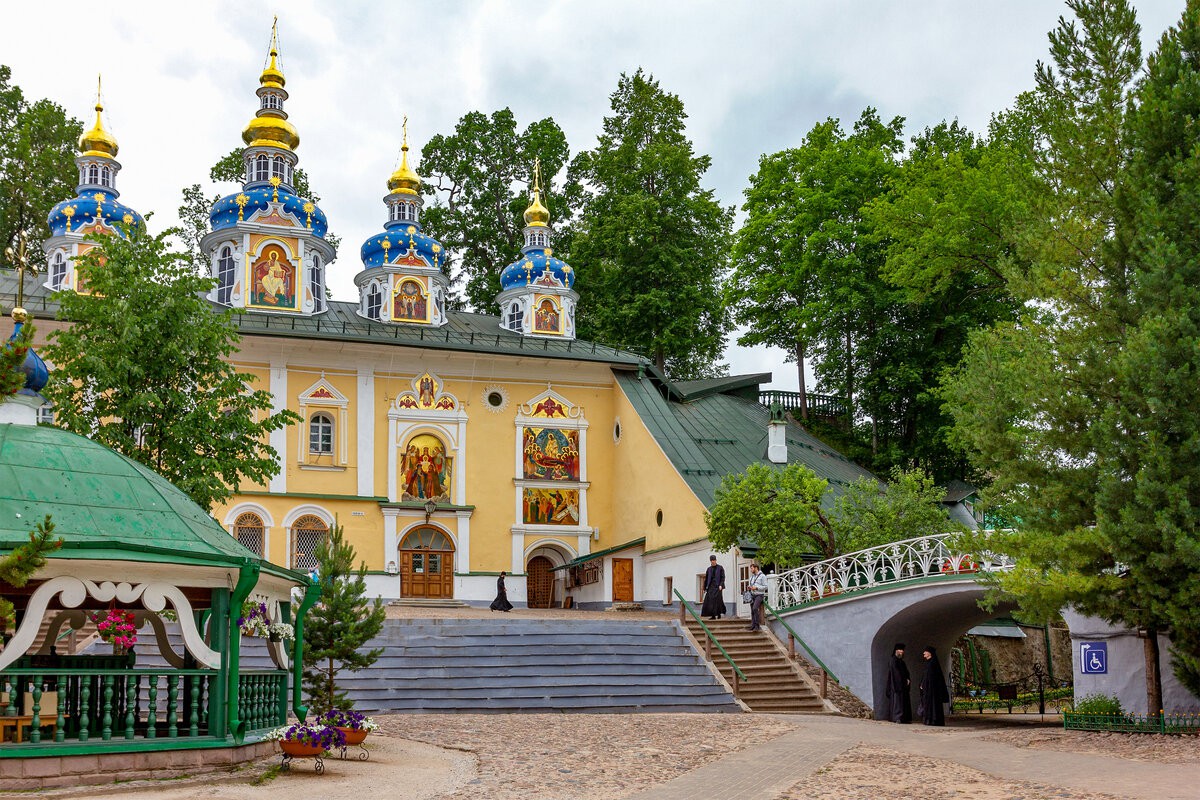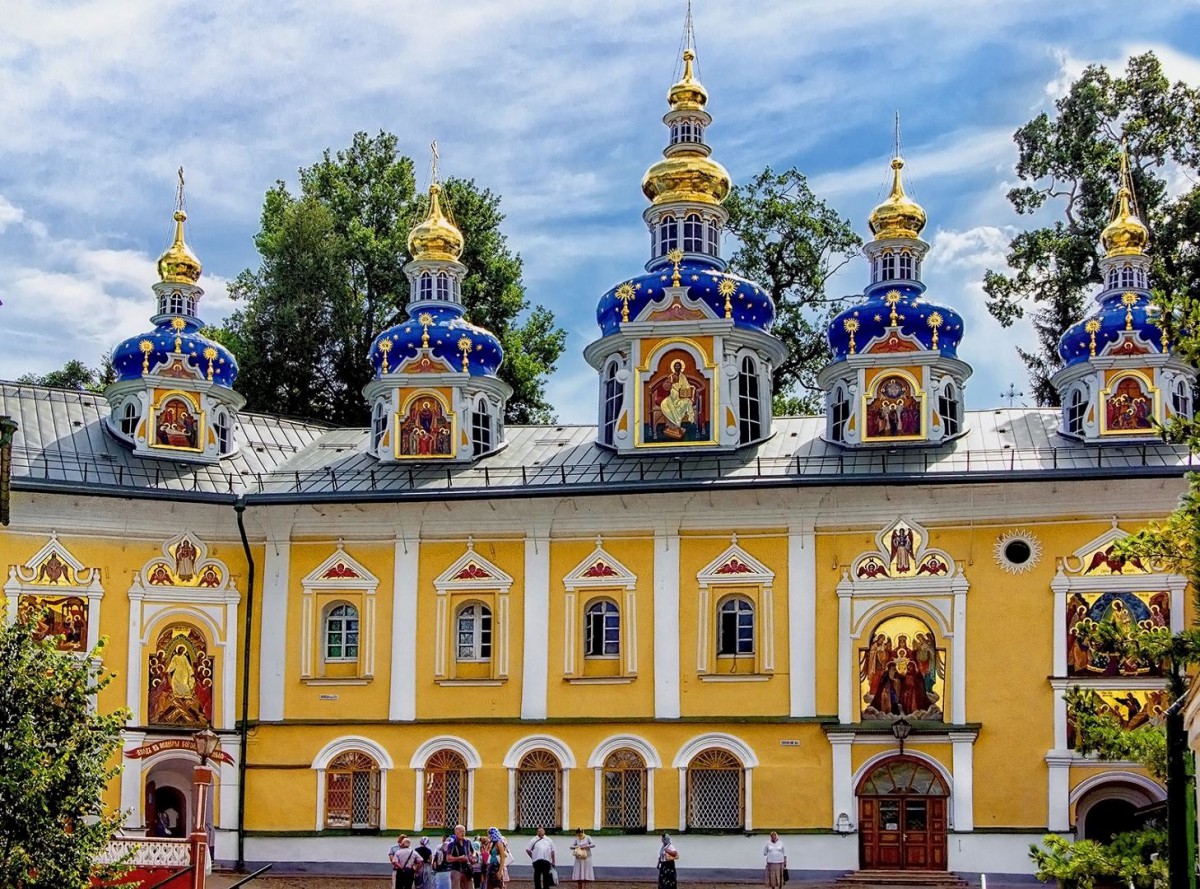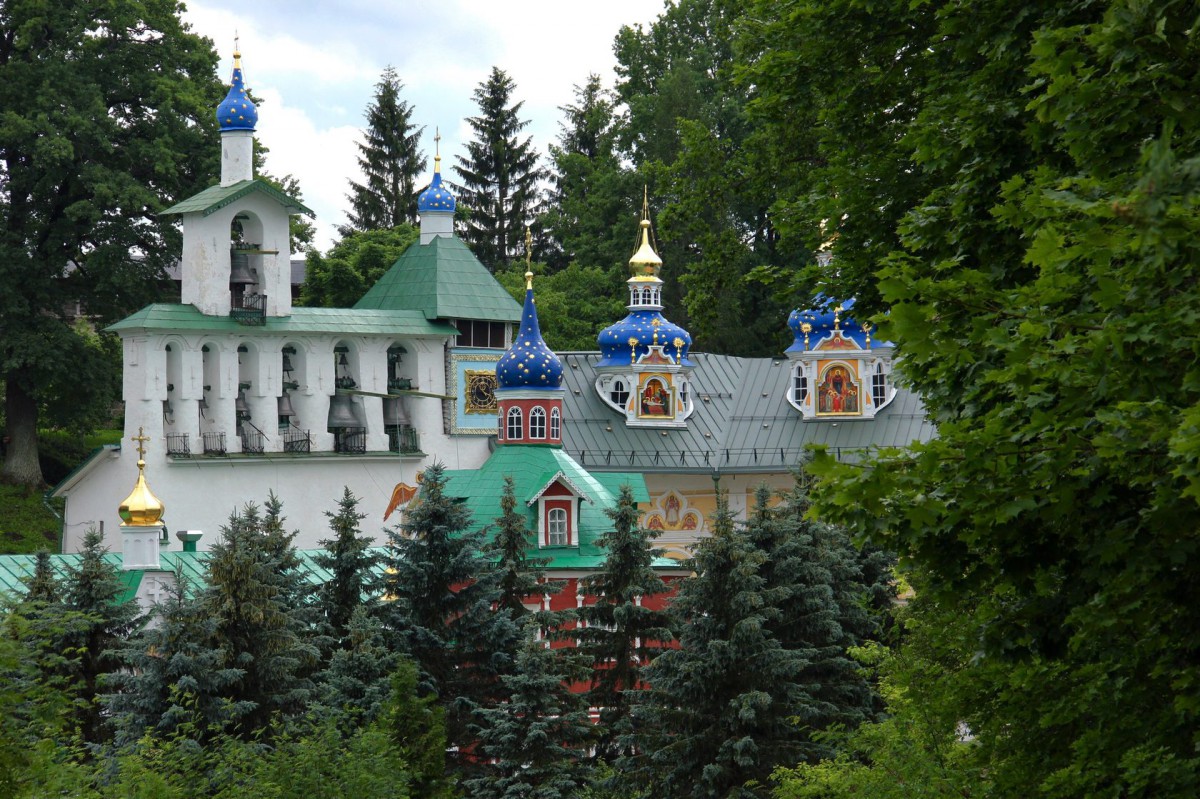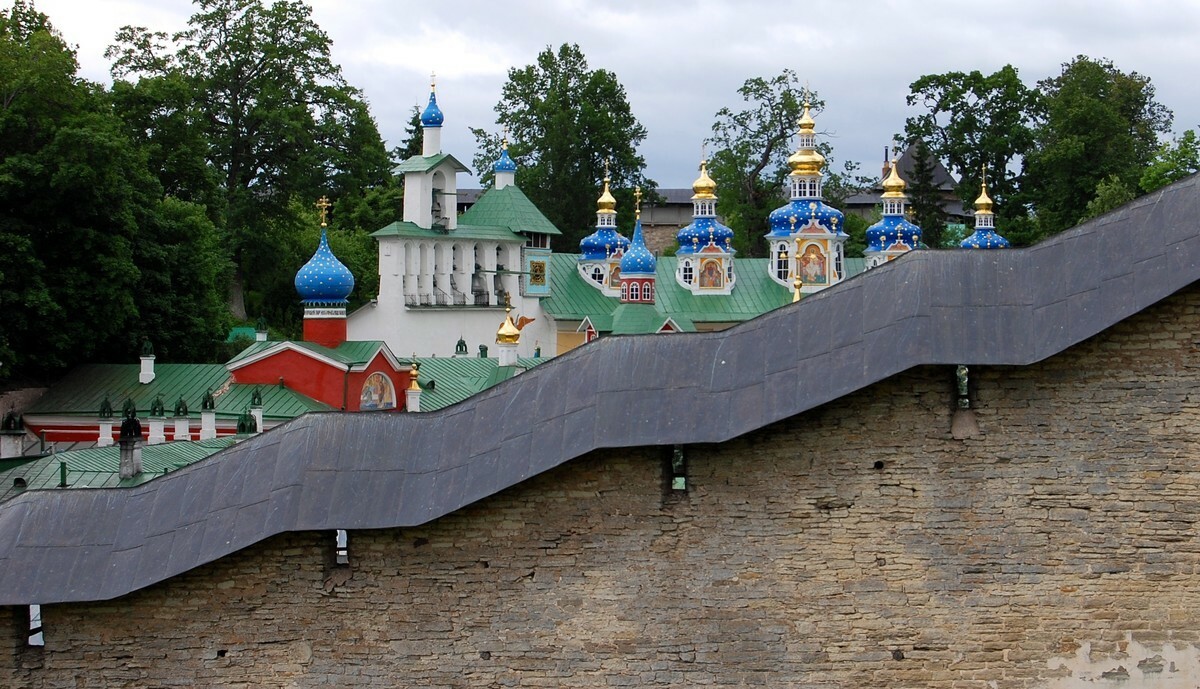The monastery, which bears the name of the Holy Dormition Pskov-Pechory monastery, is the richest and largest male community in Russia. Its history stretches through the centuries. Since the founding of the monastery in the 15th century, there has not been a day on which the soul seeking God would not have been accepted by spiritual mentors. The Monk Jonah is considered to be the founder of the monastery.
The founder chose a picturesque place for his prayer solitude, having dug a small cave church in the mountain. It was consecrated in 1473 with the name of the Dormition of the Most Holy Theotokos.
An important role in the decoration, strengthening of the monastery was played by the clerk of the sovereign Misyur Munekhin in the 16th century, who was distinguished by high piety, combined with an excellent education at that time. Misyur Munekhin provided patronage assistance to the future abbot of the monastery, the venerable disciple Cornelius, during whose time the monastery experienced its heyday: an excellent library was collected, a chronicle was kept, icon-painting workshops were organized. Hegumen Cornelius strove for the spiritual enlightenment of the Estonians, but his attempts were stopped by the military victories of the Germans.

During the leadership of Cornelius, the monastery was surrounded by a reliable stone wall, equipped with nine powerful towers, three gates. On the territory of the monastery, the stone Church of the Annunciation, the gate of St. Nicholas Church were rebuilt.
During the Livonian War, in accordance with the instructions of Ivan IV the Terrible, the Pechory Fortress was erected. At that time, the Russian army actively used siege, fortress artillery, which became the defining moment in determining the power of the fortifications. The towers and walls of the fortress were erected on the upper slope of the ravine, the bottom of which was occupied by the Kamenets stream. Structures seem to descend to it from both sides, forming a closed ring. The total length of the walls was 726 meters, and the thickness was 2 meters. The building has almost two centuries of combat experience. The monastery turned out to be impregnable for the detachments of the troops of Stefan Batory during the Livonian War, for the Polish army of Hetman Khodkevich, the soldiers of the Swedish kings Charles XII, Charles Gustav. The history of the successful confrontation of the monastery, glorified by the heroism and courage of its defenders - monks and archers, ended with the end of the Northern War, the result of the victory in which was the displacement of the western borders of Russia towards the Baltic Sea.

Interest in the monastery is fueled by the presence of caves, which served as the basis for the monastery, and later became an underground tomb, a kind of necropolis. The caves are built in dense layers of continental sand, in karst voids created by nature. Their feature is a constant temperature, keeping the value close to zero in any weather. The bodies of warriors, monks or ordinary inhabitants of the surroundings buried in them do not decompose, despite the centuries that have flown over them. The coffins in the tombs are simply stacked on top of each other. Initially, the caves were small, but with the growth of the monastery necropolis, they began to require expansion, which was provided by the monks themselves. Today, the tombs are two small caves at the entrance, six long underground galleries. In the caves there are warriors - who died heroically during the years of the Livonian War. The ancestors of Tatishchev V.N., relatives of Kutuzov M.I., composer Mussorgsky M.P., poet Pleshcheev A.N.

The modern monastery consists of 11 churches, 3 of which are located in the dungeons. The Assumption Cathedral became the very heart of the monastery. This is the first monastery church built in caves, first consecrated in 1473. The unique building of the monks and the oldest building, which Christians from different regions of the country, foreign tourists go to see.
At the beginning, the Assumption Church looked like a small cave located on the slope of a sandy mountain. Later it was enlarged by deepening the corridors in the sandy mountain. Already in 1523, she acquired a new sandy chapel.
In the XVIII century, the mountain was faced with a luxurious facade, which was erected in the Baroque style. In fact, the entire building of the temple, crowned with multi-tiered domes, painted with frescoes, is just a wall that goes deep into the mountains on the opposite side.
The church has become a repository of ancient monastery relics: the icon "Tenderness of the Mother of God of Pskov-Pechory", the icon "Assumption of the Mother of God", which became the creation of the Pskov icon painter Alexei Maly, donated to the monastery in 1521, the unique fresco "Procession of the Righteous", which experts date back to the 16th century.

In order to preserve the gifts and contributions to the monastery, by the end of the 17th century, a stone sacristy was equipped, which today serves as a monastery library. At the bottom is the Church of St. Lazar, the Church of the Presentation of the Lord, a two-story refectory, and the Fraternal Building were erected nearby. The temple of the Archangel of God Archangel Michael was erected on the upper platform. Its golden domes, attracting the attention of tourists, appeared in 1827. The temple was built on donations from soldiers and officers who participated in the war of 1812. Surrounded by the monastery garden, behind the domes of the Assumption Cathedral, there is a temple of All the Pskov-Pechory Saints, built of wood. The building is striking in its simplicity and sophistication.
Today the monastery has about a hundred inhabitants living and working at the temple. Their main occupations: kliros, kitchen, prosphora, bee-keeper, monastery fields, icon-painting workshop. The monks actively conduct catechesis: constant pedagogical seminars, numerous Sunday schools for children and adults, publishing activities, spiritual conversations with pilgrims, meetings with employees of military units, representatives of various organizations.

The Day of the Assumption of the Most Holy Theotokos, celebrated annually on August 26, has become the main holiday of the monastery. At this time, there is an influx of guests in the monastery. Christian pilgrims from all over Russia and other Orthodox lands are welcome here. On this day, a divine liturgy is held, a procession is made, led by a miraculous icon stored at the temple.
You can get to the monastery by regular buses or private vehicles.